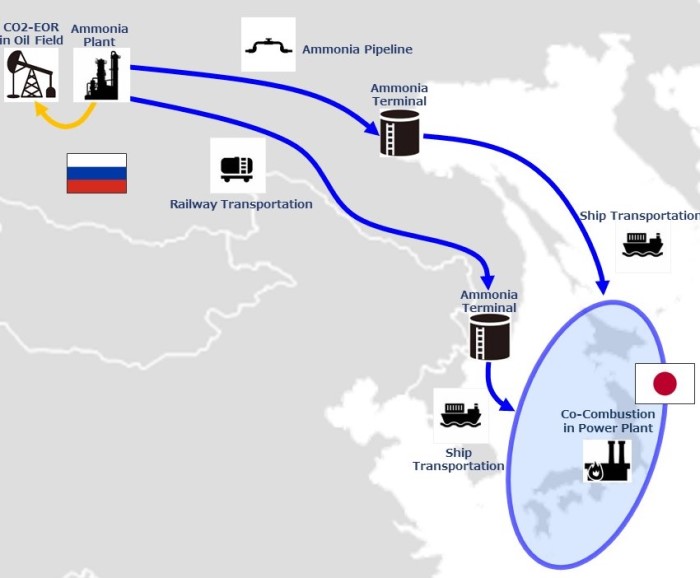Exploring an ammonia fuel supply chain between Australia and Japan
By Julian Atchison on July 30, 2021
Woodside Energy, JOGMEC, Marubeni and two Japanese power utilities signed a joint agreement this week to investigate the feasibility of a blue ammonia supply chain between Australia and Japan:
Under the joint agreement, the Parties will conduct a feasibility study of the entire supply chain, including the production of clean fuel ammonia in Australia from natural gas with CO2 abatement methods such as CCS, CCUS and bio-sequestration; marine transportation to Japan; utilization of ammonia as a fuel for power generation and marine use; and financing.
Feasibility Study on Establishing a Clean Fuel Ammonia Supply Chain from Australia to Japan, JOGMEC press release, 20 July 2021
The Parties will work to establish a clean fuel ammonia supply chain between Australia and Japan through collaboration using their respective technologies and knowledge, and will promote efforts to decarbonise both Australia and Japan.
Latest in a string of developments
This week’s announcement follows a busy few months for developments on the Australia – Japan front. As already reported in Ammonia Energy:
- Woodside and Marubeni (alongside IHI Corporation) are already embarking on a joint feasibility study for green ammonia exports from Australia to Japan (from a small-scale, 250 MW electrolysis facility in Bell Bay, Tasmania),
- IHI announced a similar, green-ammonia-from-Tasmania joint study in partnership with Fortescue,
- and a government-level partnership between the two countries was launched to jointly develop and promote decarbonisation solutions (including the use of clean ammonia fuel).
More blue ammonia for JOGMEC

The new joint agreement was actually JOGMEC’s second blue ammonia announcement this week. An agreement between JOGMEC, Itochu and Irkutsk Oil Company will see those partners explore the feasibility of a blue ammonia value chain between eastern Siberia and Japan. Commercialisation of the conceptual value chain (pictured) would involve inland transport of blue ammonia from Siberia to Russia’s east coast by pipeline and railway. After ship transportation the blue ammonia reaches its final end-use: coal co-combustion.
